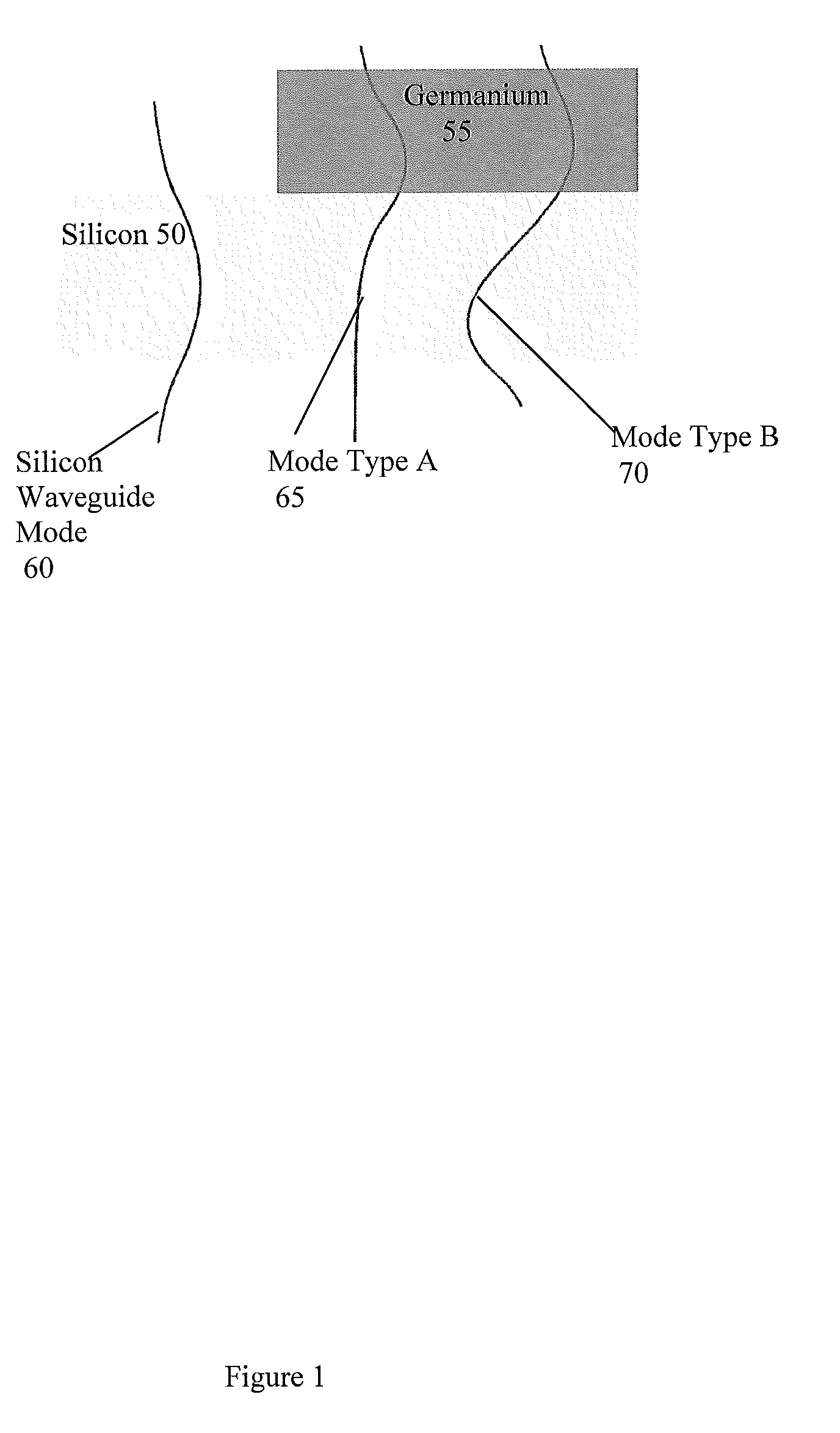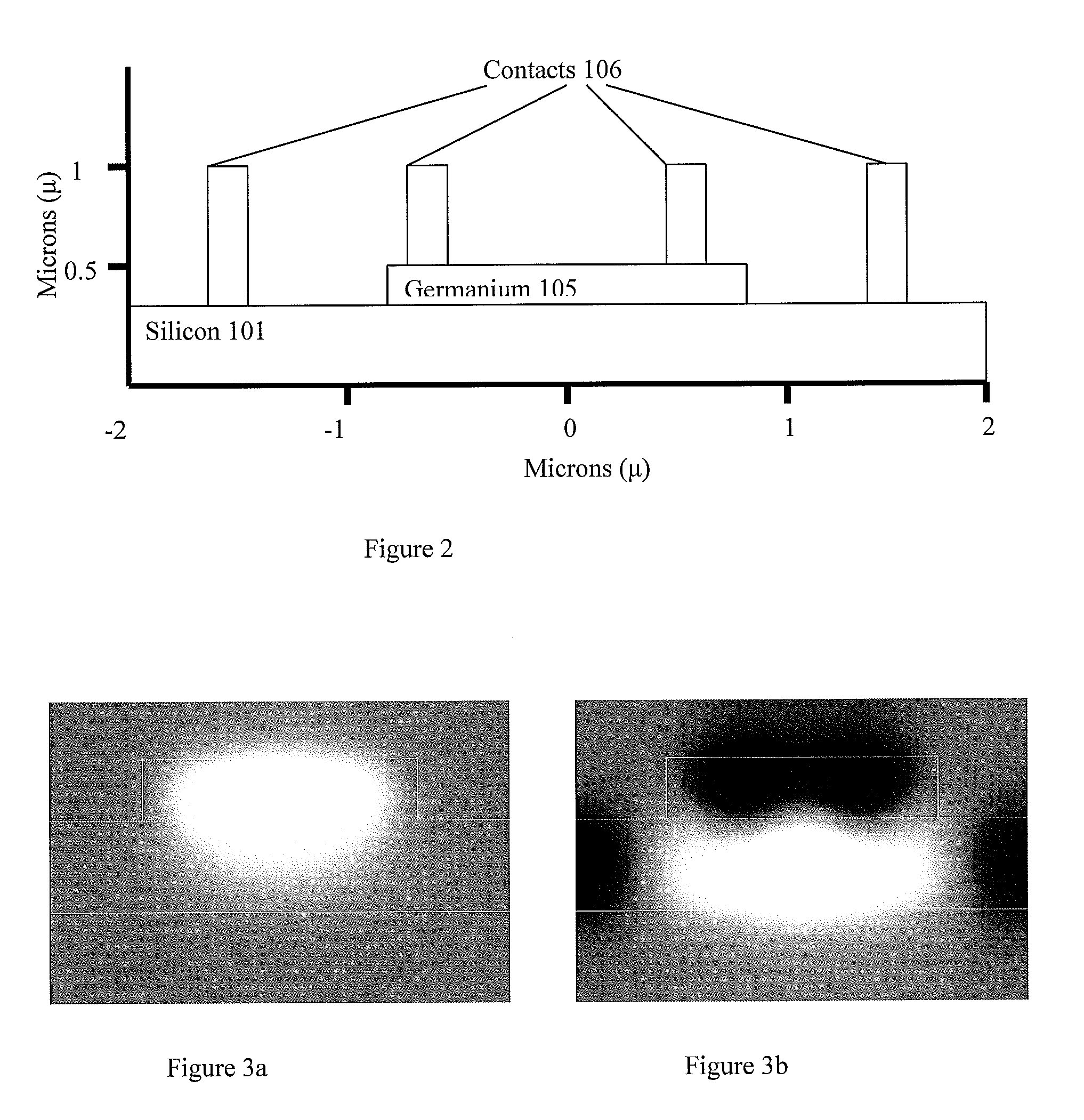Design of CMOS Integrated Germanium Photodiodes
a technology of integrated germanium and photodiodes, which is applied in the field of optical devices design and manufacture, can solve the problems of less sensitive and/or noisy devices, and achieve the effects of reducing optical scattering losses and/or optical absorption losses, improving integrated waveguide photodiodes, and improving the effect of integrated waveguide photodiodes
- Summary
- Abstract
- Description
- Claims
- Application Information
AI Technical Summary
Benefits of technology
Problems solved by technology
Method used
Image
Examples
Embodiment Construction
[0048]For the purposes of discussion, modes in photodiodes according to the current invention may be numbered (mode 1, mode 2, mode 3) in order according to increasing index and / or typed (type A, type B, type C) according to other properties. Mode 1 (mode type A) is the ground mode of the waveguide photodiodes. It has a single lobe, a high overlap with the germanium, and is well guided by the germanium stripe even in the absence of other structures in the silicon. Mode type B has a vertical lobe structure and a reduced overlap with germanium as compared with mode 1. Note that vertical refers to the direction normal to the wafer surface. In some cases, it may be only partially guided by the germanium stripe alone; for example, a type B mode may be a leaky mode in the absence of other structures such as, but not limited to, side-trenches. Mode type C has a mode overlap with germanium that is substantially higher than mode type B's overlap with germanium. Mode type C has a mode overlap...
PUM
| Property | Measurement | Unit |
|---|---|---|
| infrared wavelength | aaaaa | aaaaa |
| infrared wavelength | aaaaa | aaaaa |
| width | aaaaa | aaaaa |
Abstract
Description
Claims
Application Information
 Login to View More
Login to View More - R&D
- Intellectual Property
- Life Sciences
- Materials
- Tech Scout
- Unparalleled Data Quality
- Higher Quality Content
- 60% Fewer Hallucinations
Browse by: Latest US Patents, China's latest patents, Technical Efficacy Thesaurus, Application Domain, Technology Topic, Popular Technical Reports.
© 2025 PatSnap. All rights reserved.Legal|Privacy policy|Modern Slavery Act Transparency Statement|Sitemap|About US| Contact US: help@patsnap.com



